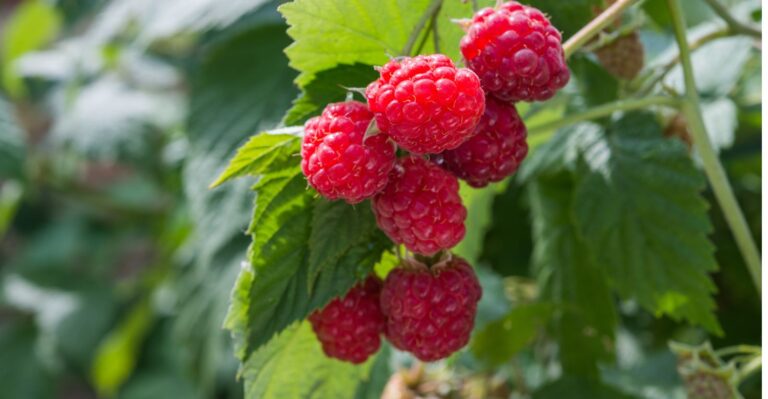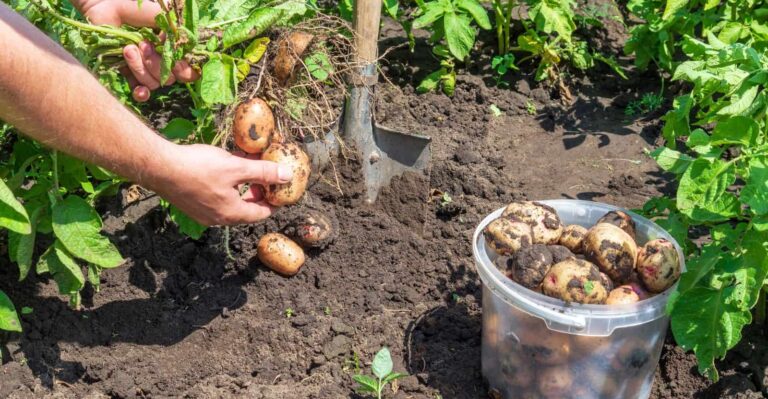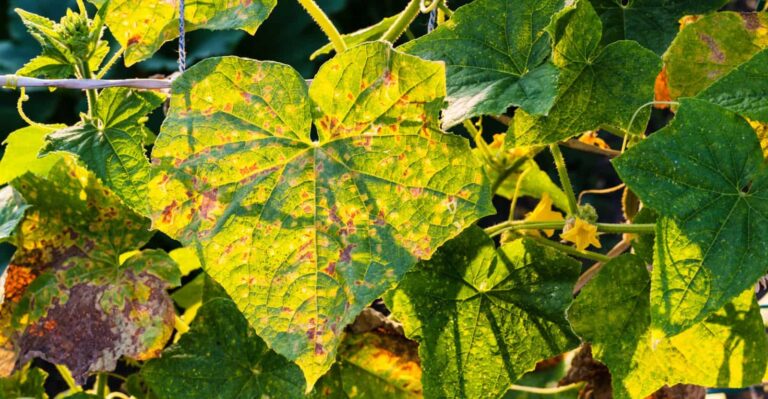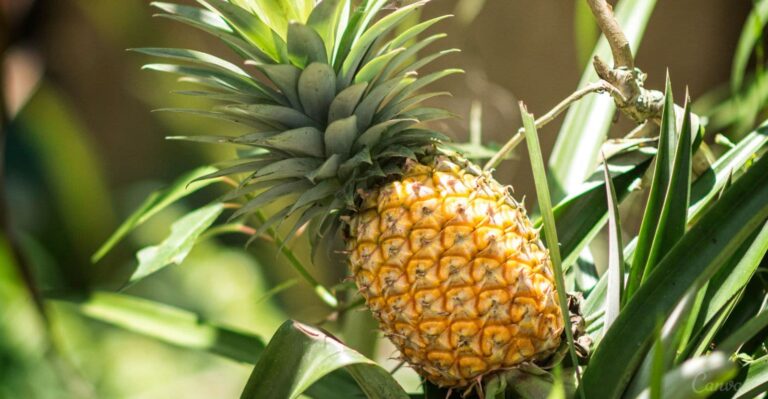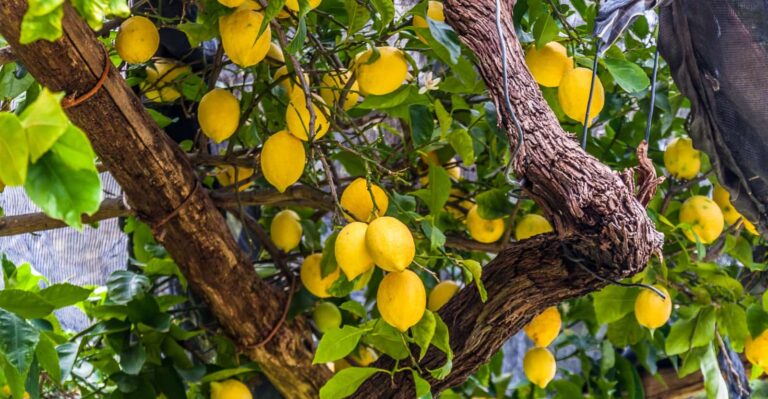Amazon has put together some great Home Gift Deals – save money and get your shopping done at the comfort of your home! Click here to see deals on Amazon
If you like the taste of mint, you’re in luck. This herb is easy to grow inside or outside, and it’s well suited to grow in containers.
When you’re looking straight and easy to follow the instruction on “how to grow mint indoors,” there are a few different ways to do it. The most common being is growing it through stem cutting, and the second is growing it using seeds.
We have covered it in-depth on growing and caring for mint that anyone can follow without needing any extensive gardening experience.
Let’s get started.
Why should you grow mint indoors?
Growing mint indoors is a great way to enjoy the mint leaf’s fresh aroma around the home all year long.
Whether you want fresh mint in a glass of iced tea, in a refreshing mint juice, or a make a mint chocolate chip ice cream cone, you can enjoy its fresh flavor year-round by growing an indoor mint plant.
Mint is a very versatile herb with a strong aroma. There isn’t more refreshing than a fresh mint drink. Its aromatic and flavorful foliage enhances teas, beverages, desserts, and many other mealtime dishes.
There are several different species of mint that you can grow indoor. Most popular types include chocolate mint, orange mint, lavender mint, apple mint, and pineapple mint.
Peppermint and spearmint are the most common types that you may be familiar with. Peppermint has a delicate and sweet flavor, while spearmint has a sharper and highly intense flavor.
You can also grow mint with limited space, such as on a balcony, where they can receive sufficient morning and afternoon light.
Growing mint indoors provides you with an unlimited supply of delicious culinary herbs that you can use both fresh and dried.
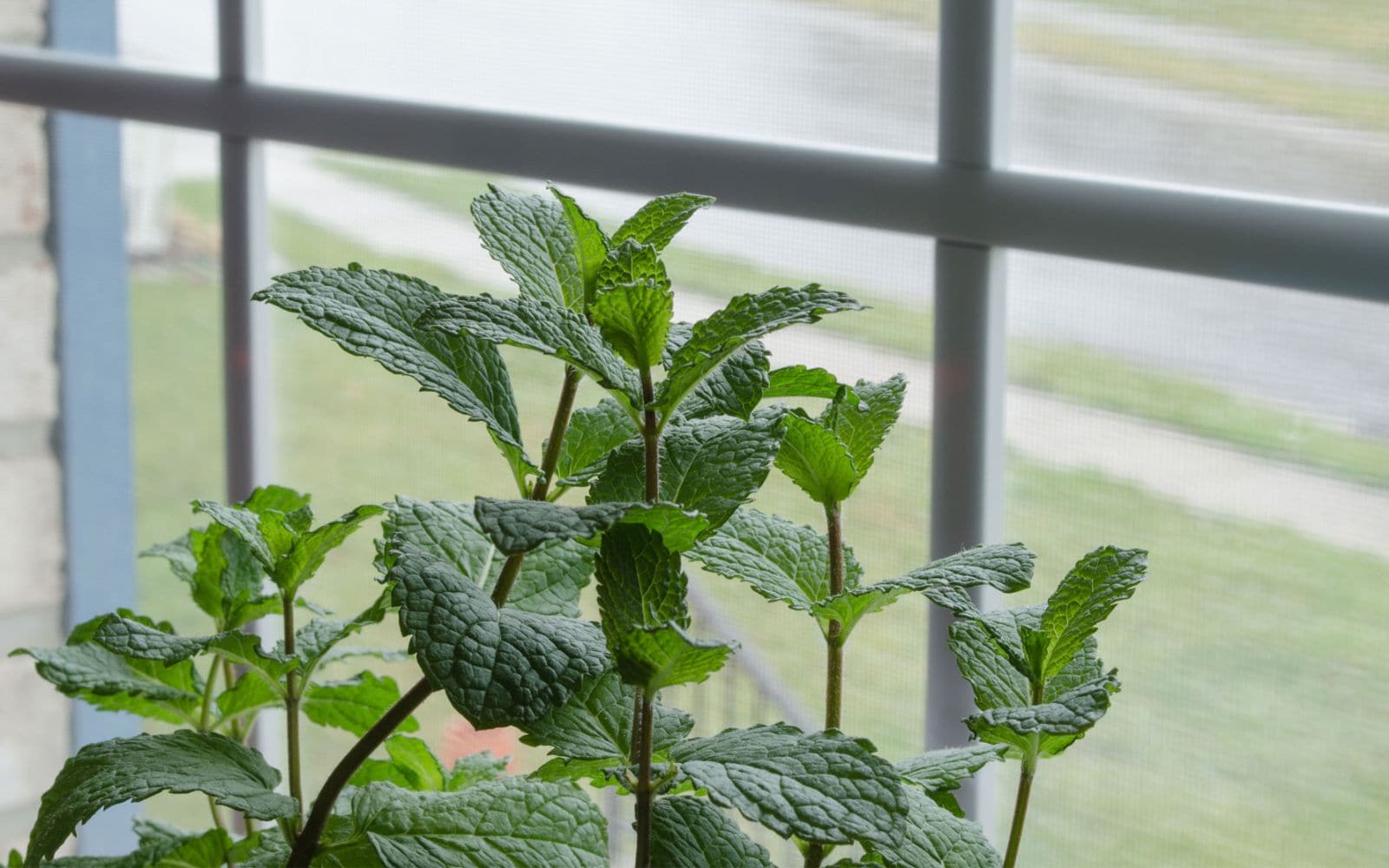
What are the mint varieties?
There are over 25 different mint species that can be grown indoors and outdoors. Most people think of peppermint and spearmint being the only kinds of mint.
But there are several others used for different purposes. For example, mint is used in food, medicines, and outdoor ground cover.
Here are some popular mint varieties:
Peppermint: It has bright green rounded leaves used in herbal teas, desserts, and medicines. It helps with nausea, headache, and clear sinus congestion.
Spearmint: It has a slightly sweeter flavor that makes it a great additive to confections, toothpaste, soaps, and shampoos. The sharply pointed leaves give the name spearmint.
Apple mint: These mints have hairy leaves used in sweet and exotic dishes. You can use fruit salads and desserts to refresh yourself.
Orange mint: These have a robust flavor that you can use sparingly in desserts and puddings.
Licorice mint: These have short but smooth heart-shaped mint leaves. The intense fresh aroma makes it suitable to use in herbal tea and salads.
Mint plant growing summary:
| Factor | Growth Condition |
|---|---|
| Soil | Moist soil with organically rich compost |
| Water | Water regularly 2–3 times per week (at least 1.5 inches of water per week). |
| Sunlight | 6 – 8 hours of sunlight |
| Temperature | 65 – 70 F (18–22 C) |
| Fertilizer | High nitrogen liquid fertilizer |
| Propagation | Stem cutting, Seed |
| USDA Zone | 3 – 11 (depending on species) |
How to propagate mint?
Mints are easy to grow and care for. With more than 25 different varieties to choose from, you can plant mint in most climates. There are various ways you can propagate mint, but the following two are the most popular.
1. Propagate mint from a seed
2. Propagate mint in water (hydroponic mint)
Propagation with mint seed
If you’re wondering, “Is mint easy to grow from seed”? the simple answer is yes, growing mint plants from seeds is relatively easy and lots of fun. Follow these steps to get started.
Step 1: You can buy healthy mint seeds from a garden center or order them online. After you have received the mint seedling, it’s a good idea to keep it in an envelope and place it in a cool, dry place until you’re ready to plant.
Mint seeds are notoriously touchy, so you want to avoid exposing them to moisture until you’re ready to start growing them.
Step 2: Choose a container that is wide enough for a mint to be planted. You can choose a container that is around 10 inches deep and 6 to 8 inches wide. This gives mint roots enough space to spread and grow healthy. We like these grow bags that provide excellent aeration and air permeability to the mint plant.
Step 3: Prepare soil that is slightly acidic with a pH between 5.5 and 7.5. You can use a soil tester to measure the pH level.
You can add natural fertilizer or compost to the soil to help the seed grow. When you’re ready to sow seed, remove seeds from the pouch and soak it in mildly warm water for a few hours.
Step 4: Spread the soil around and dig it a quarter-inch with your finger to bury the seed. Keep a couple of inches distance between seeds so as not to overcrowd them.
You can place the mint seed container near the window where it can get some sunlight. It usually takes 10–15 days for mint seeds to start germinating.
Step 5: You have to regularly water the mint plant and keep the soil moist. Always water it near the roots and not from the plant’s top to prevent any fungal disease.
Step 6: In a few weeks, you will find mint leaves ready to be used. If you’re not using these leaves regularly, you can keep pruning them and remove any flower that you see blooming.
If you let the mint plant flower, it changes the taste of mint to become bitter. It’s better to remove any bloom unless you want to have mint seeds.
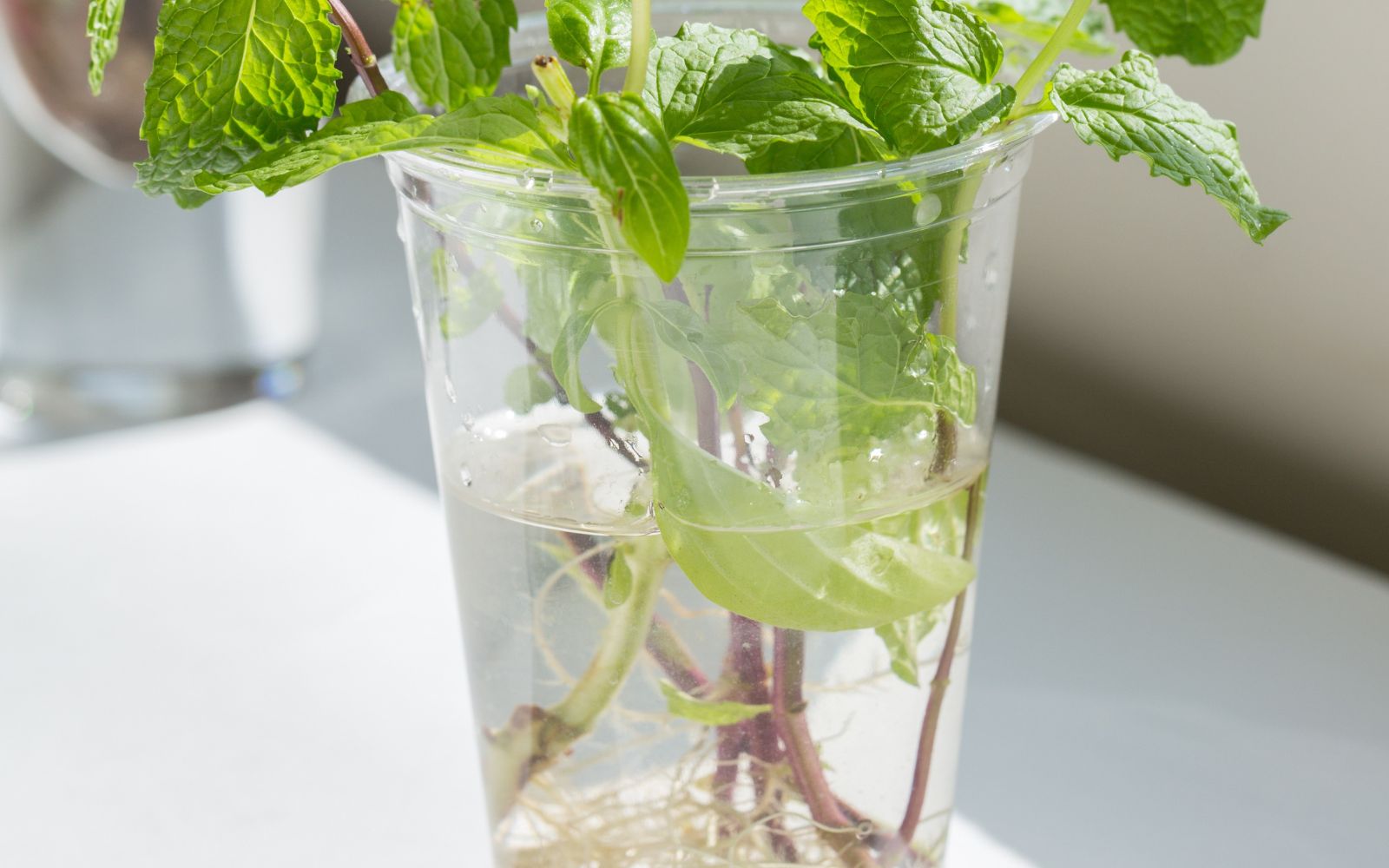
Propagate mint in water through stem cutting
If you don’t want to deal with messy soil inside your home, you can grow mint without soil. To get started, you need to have some good and healthy mint stem cutting.
Step 1: You need to have a net container with holes at the bottom. Either you can make holes yourself or order it from here to get started.
Step 2: Separate the healthy and fresh mint stem cutting that you want to plant and remove a couple of leaves from its base.
Your goal is to keep the only stem merged in the water. Avoid dipping the mint leaves in water as it will eventually rot. Apply rooting hormone to encourage root growth.
Step 3: Ensure a couple of mint nodes remain submerged in water for new roots and allow mint branches to develop from these nodes. Place the container where it gets 6 to 8 hours of full sunlight.
Step 4: In a few days, you will see nodes start developing roots and extra branches. You can use water-soluble fertilizer to encourage growth.
You can harvest mint leaves in 14 to 20 days. Replace the water every second to third week to prevent any stagnation.
How to grow and care for mint growing indoors?
Growing and caring for mint is easy. If you’re growing it outdoor, keep in mind that mint is an invasive plant, and you need to be careful to prevent its spread.
But that isn’t an issue when you’re growing it indoors, as you will be planting it in a container.
Soil
Mint needs slightly acidic soil that is moist but not overly saturated with water. You can add perlite and organic compost to provide the required nutrients to potting soil.
Standard potting mix soil with sufficient drainage works for the mint growth. Mint grows well in containers, as long as it has adequate drainage. You should prepare a potting mix with a reasonable drainage rate.
Water
Mint needs regular watering, at least 1.5 inches per week. The best way to determine how much water your mint plant needs is to check the soil moisture. This is the most reliable way to tell if your mint is getting enough water.
It’s crucial during the hot summer months since mint plants are prone to root rot if they get too much or too little water.
Fertilizer
When you’re growing mint indoors, you’ll probably want to make sure it has enough nutrients in the soil to thrive. You can add compost to your mind bed, but it’s also a good idea to use fertilizer since it contains nutrients that it needs to fuel its growth.
There are several ways to fertilize the soil around your mint plants. You can use organic mulch, add fertilizer to the ground directly, use pellets, or spray liquid concentrate fertilizer.
You can use liquid organic fertilizer every three weeks to fertilize it from mid-spring to late summer. Use fertilizer with a slightly larger concentration of nitrogen to help grow more leaves.
Temperature
Plant mint grows well when the day temperature remains at 65–70 F (18–22 C), and the nighttime temperature doesn’t fall below 55–60 F (13–15 C). When you’re planting indoors, also make sure that you also maintain the optimal humidity level.
Mint doesn’t grow well in dry air. Even though the temperature may be ideal, you should keep it lightly moist using a humidifier or spray it with a light mist of water.
Sunlight
While most plants do well in full sunlight, mint does best with at least six daylight hours’ exposure. Not only does it help your mint grow, but it will also keep your mint healthier and more resistant to fungal infections and diseases.
A few mint varieties, such as pineapple or orange mint, do well in partial shade, but they still need at least four to five hours of sunlight per day.
When you’re planting mint indoors in a container, it’s also a good idea to keep rotating it every few days. It’s because the mint stretches in the light direction that may cause it to become leggy and pale.
When you’re planting it in a basement or where it won’t get natural sunlight, you can use a small grow light over the mint plant.
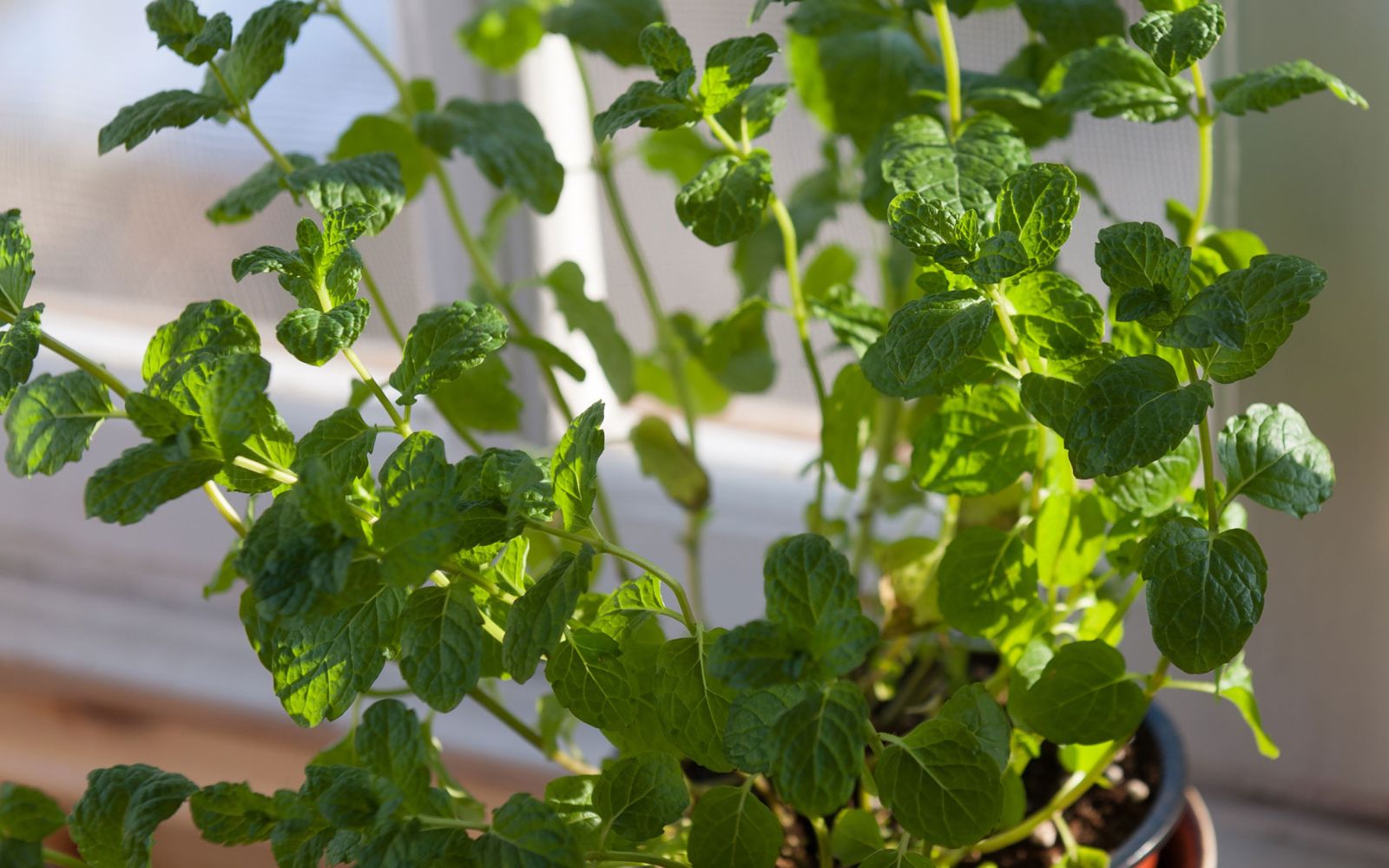
How do you prune an indoor mint plant?
Mint is a fast-growing plant that needs regular pruning to remain healthy and continually grow. You should prune any leggy or exposed branch that keeps the plant’s nice appearance and help control the growth.
You should also prune any flowering buds as they appear to extend the mint harvesting season. You should use sanitized pruning shear to prune any spindly and dried mint branch to encourage growth.
How to harvest mint without killing the plant?
You can harvest mint in the same way as you would harvest basil. A newly planted mint becomes ready to harvest from 70 to 80 days.
If you want to continue growing fresh mint leaves, you should cut the plant when it’s around 6 inches long and let 1–2 sets of leaves on it to support growth.
You should be careful not to over-harvest (not more than 1/3 of the plant). This prevents the weakening of plants so you can have long harvesting of leaves.
Mint Pests and Diseases
Mint pests and diseases are rampant in the mint family, so it’s essential to know how to prevent them before they have a chance to ruin your mint plant. Here are the most common mint pests:
Mint leafhopper: These pesky little bugs will hop from plant to plant and suck the sap from your mint’s leaves. You’ll find these pests in the US’s Southern regions, as their northern cousins are just too cold for them.
Mint Aphid: These tiny little pests are like the mint leafhopper’s close relative. They take a different approach as they suck the sap from the plant’s stems.
Powdery Mildew: Powdery mildew on mint is caused by a fungus (Podosphaera xanthii) that infects the mint plant’s foliage.
You might notice this fungus on various other plants, including raspberries, strawberries, cucumber, and others, but it’s also most common on mint.
Stem Canker: This is one of the most frustrating gardening problems a mint grower can face. This is a fungal disease that can quickly spread and kill even the most robust-looking mint plant.
The fungus attacks the stem, causing a rapid withering of the leaves, stunted growth, and wilting. It eventually kills the plant.
You can treat these problems by keeping a close eye on the plant and removing any infected leaves or plants before they can spread. You can also treat it with pesticides and fungicides if the problem is severe.
Frequently asked questions
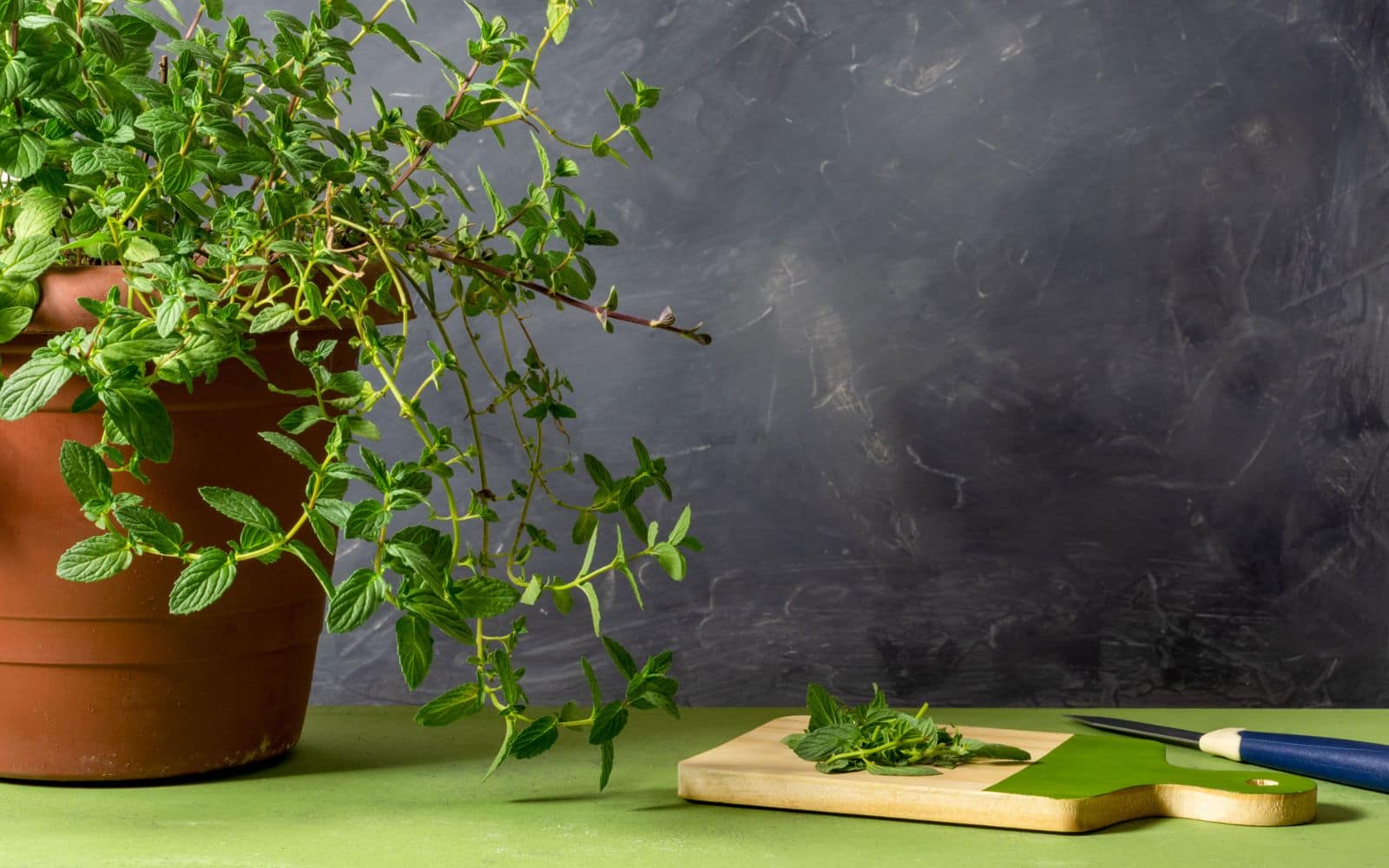
Does mint come back every year?
Unlike most fresh herbs, mint is a perennial, returning year and year if you treat it well. This makes it an excellent choice for even the newest gardeners for growing it as an indoor plant.
While it’s native to the Mediterranean region, mint will grow in nearly all climates. While it’s often used as a ground cover, it also grows well in pots.
A small patch of mint can be grown in a pot then moved to the ground in the summer. Alternatively, you can grow mint by planting it directly in the pot.
Mint is a very hardy and easiest herb plant to grow. It thrives in a humid summer and cold, snowy winters when planted indoor.
Mint’s hardiness means that it can be hard to kill, but it can also be challenging to keep under control once it takes hold.
What happens if your mint plant starts flowering?
If your mint plant has started to flower, then you’ve managed to grow a big mature plant producing lots of leaves. The next step is to harvest that mint and enjoy it.
You can use a sharp pair of scissors/shears/knife that you can use to cut the branches from the plant. It’s best to harvest mint in the morning, during the coolest part of the day.
Harvesting will help prevent the leaves from wilting at this time of the day, keeping the flavor and aroma of mint intact. You should also be careful not to let mint flower as it usually alters mint leaves’ flavor.
Moreover, mint flowers are lovely, but they can invade native plant species and even spread to undesired parts of your yard. So, you have to be careful when planting it outdoor.
One of the best ways to control mint flowers without killing them is to harvest the plants’ stems. You can do this at any point during the growing season, and it will have a negligible effect on the plant’s growth rate.
Why does the mint plant turn black?
If your mint plant is turning black in the herb garden, there is an easy fix to this. Blackened leaves on a mint plant are caused by thrips, tiny insect pests that feed on the plant’s sap, or because of underwater or overwatering of the plant.
You should look closely at the mint plant for any signs of insects or pests on the plant. Sometimes the black leaves are formed as the sap reacts to the thrip’s salvia, which is highly toxic to the plant.
The damaged leaf won’t spread to the rest of the plant, and while the leaves are black, a mint plant will grow new green leaves.
You can use alcohol wipes to remove these insects from the mint plant to spread the disease. If you don’t see any clear sign of infection, you should check your watering schedule.
Mint won’t grow well on sandy or stony soil as the soil can’t retain water for long. You can amend the soil with compost and add perlite to maintain the much-needed moisture to mint roots. Also, adjust the watering frequency to keep the soil remain moisturized.
Does mint grow well in pots?
Mint is a fragrant herb that can be grown and used in many ways around the home. Mint grows quickly in pots, and it’s relatively easy to grow and maintain.
Ensure that the pot is broad and deep enough for the roots to spread, as mints don’t like congested roots. Growing mint in pots also allows you to bring it indoors if the outdoor temperature gets starts freezing.
Mint doesn’t like freezing temperatures, so if you live in a climate where frost occurs, you may want to grow mint in a pot that you can move into the house for the winter.
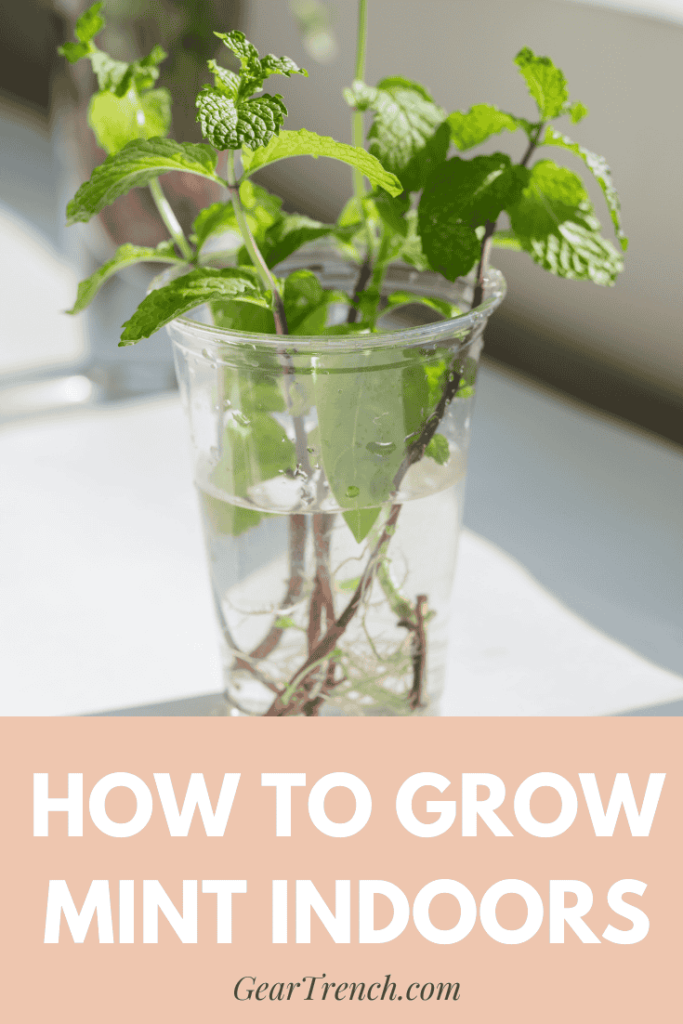
Don’t forget to share this post


